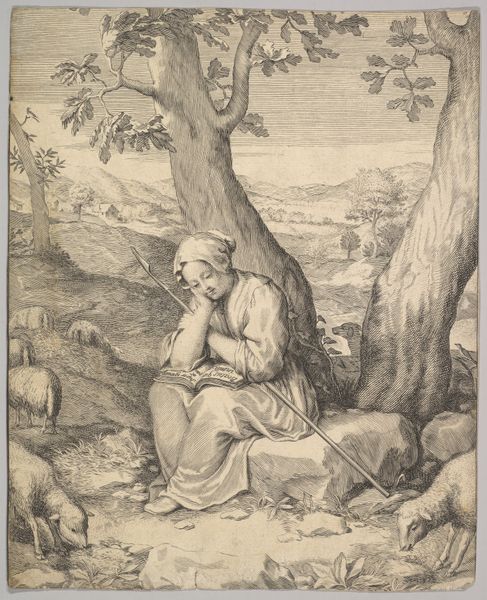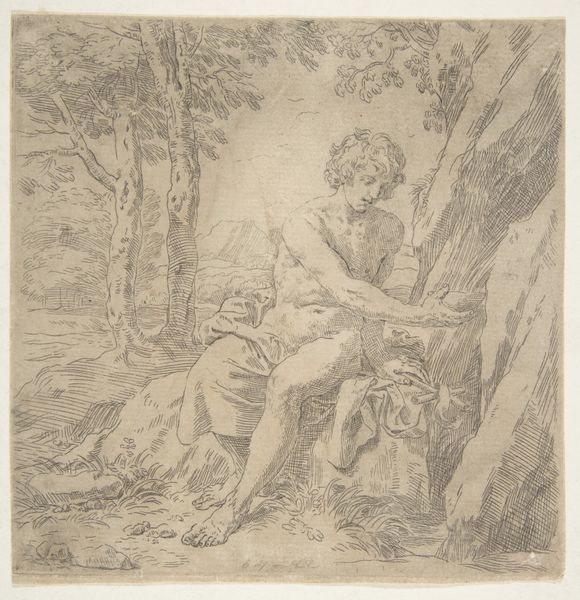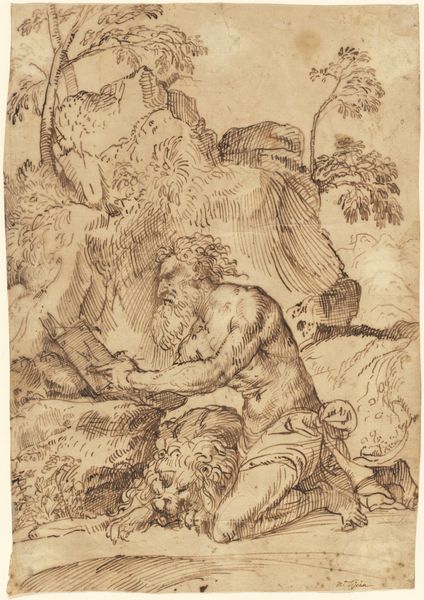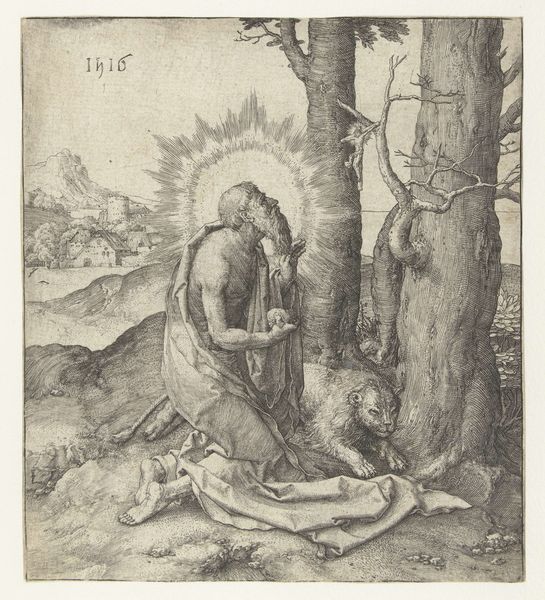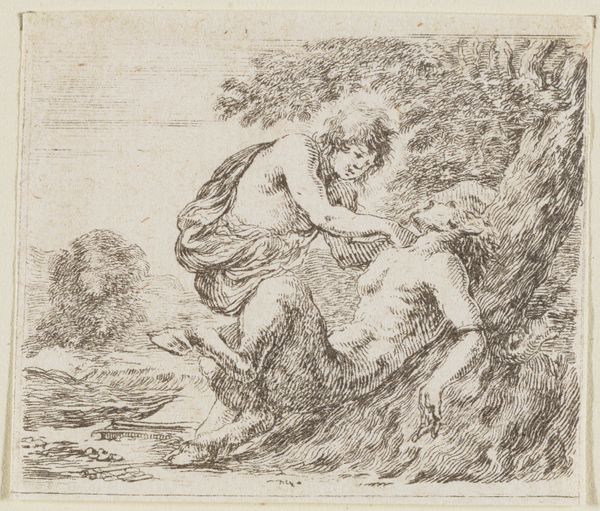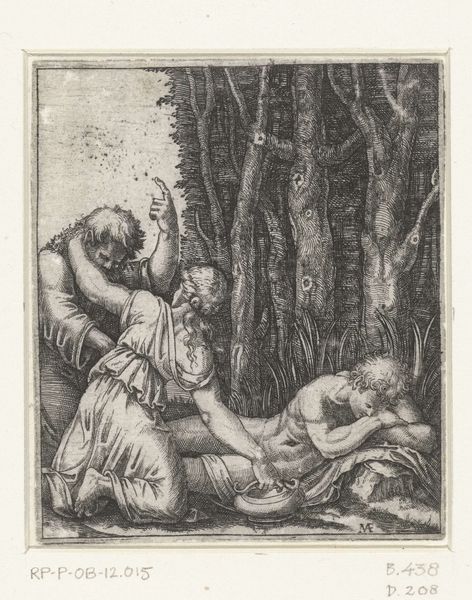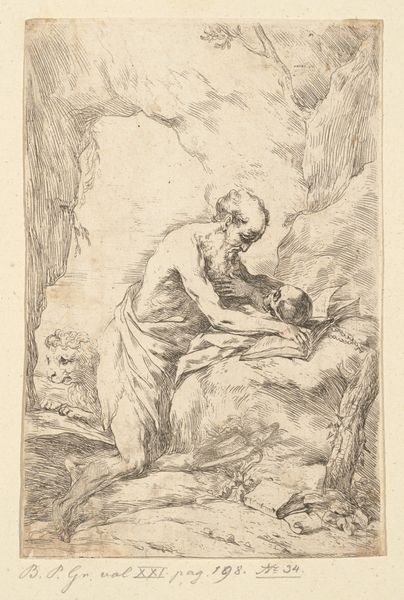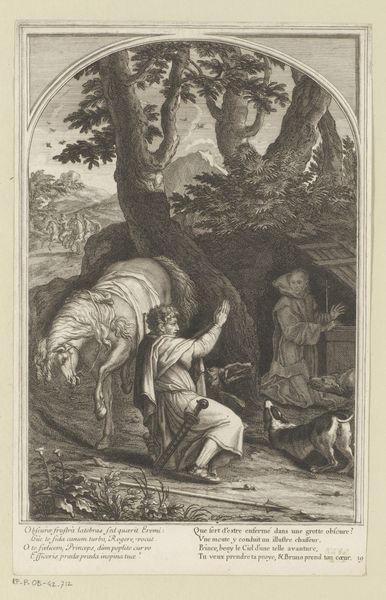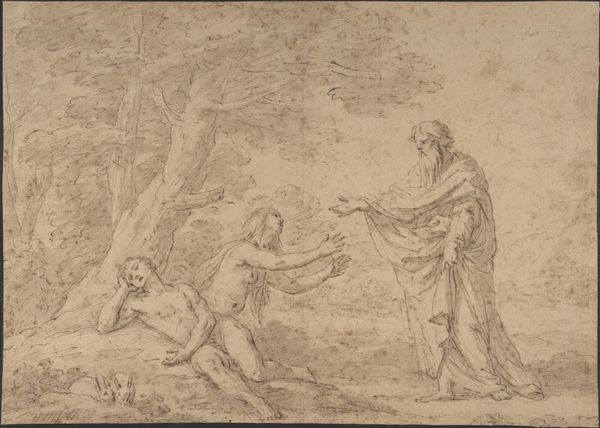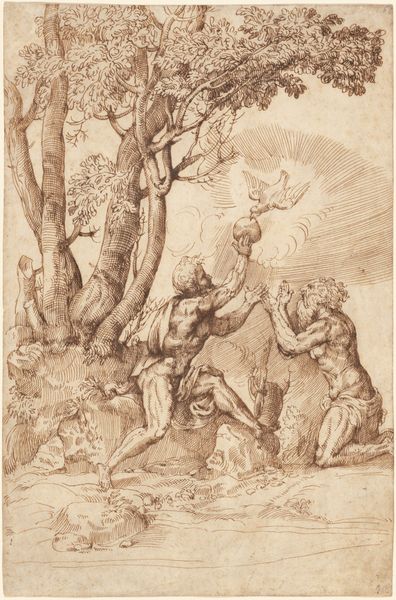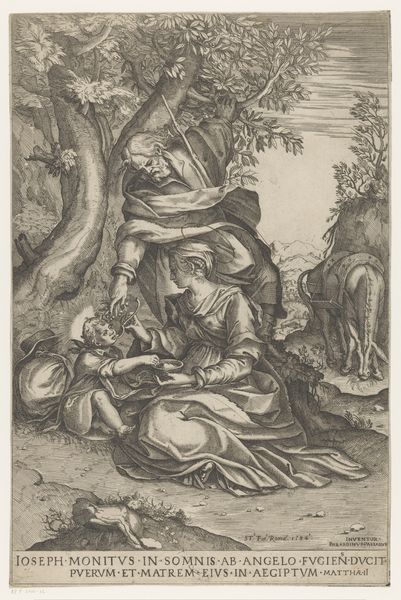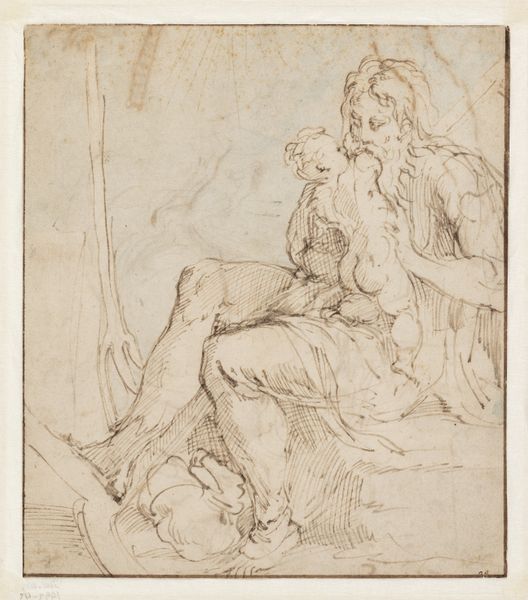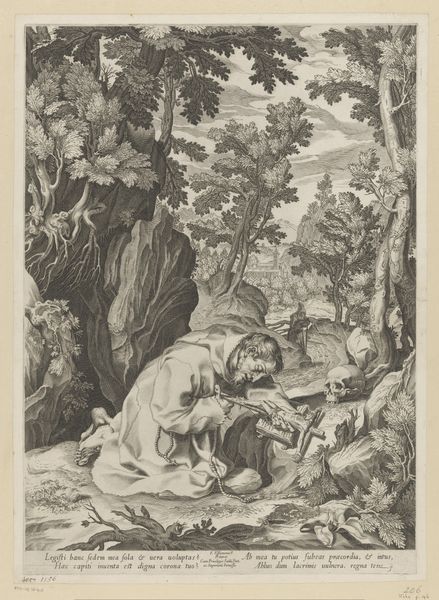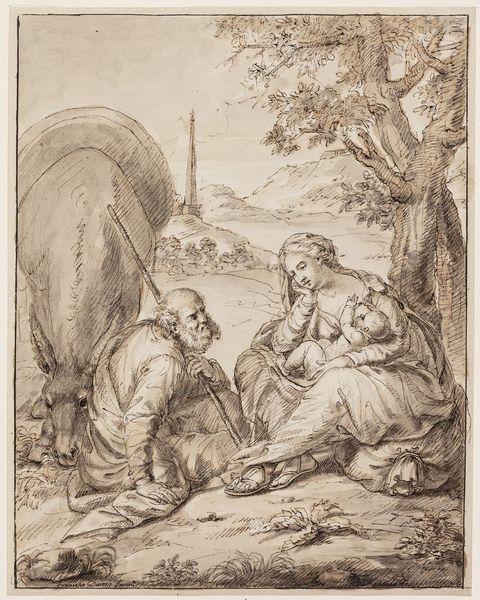
print, engraving
#
medieval
# print
#
landscape
#
figuration
#
line
#
history-painting
#
northern-renaissance
#
engraving
Dimensions: 6 x 5 1/4 in. (15.24 x 13.34 cm) (image)
Copyright: Public Domain
Lucas van Leyden made this tiny print of Saint Jerome in 1516, using the exacting method of engraving. To create this image, van Leyden would have used a tool called a burin to manually cut lines into a copper plate. Ink is then applied to the plate, and the surface is wiped clean, leaving ink only in the engraved lines. Finally, paper is pressed against the plate, transferring the image. The texture and weight of the paper, combined with the pressure of the printing process, all contribute to the final image. Notice the fineness of the lines, capturing every detail, from Jerome’s wrinkled skin to the lion’s furry mane. This meticulous process, requiring great skill and patience, elevates the print from a mere reproduction to a work of art. Thinking about this painstaking labor reminds us that even seemingly simple images carry with them a history of craft and dedication. It encourages us to consider the value of skilled handwork in an age of mechanical reproduction.
Comments
No comments
Be the first to comment and join the conversation on the ultimate creative platform.
